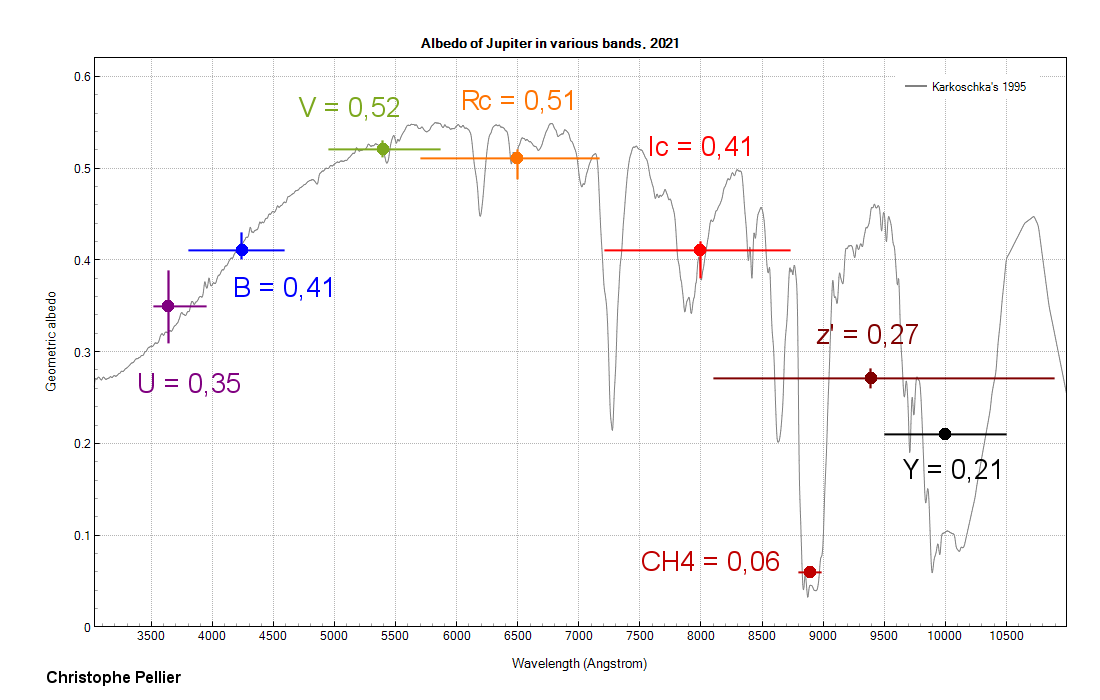| The colours of Jupiter in 2021 (1) Geometric albedo of the planet in various bands by Christophe.P |
I'm going to send a few messages regarding the results I have obtained for my personal research, which is the measurement of the variations of Jupiter's colours. This idea had been suggested by John Rogers during the 2018 JUNO meeting in London and I have been looking to get results from that idea since then. This first message presents the method and results I have obtained when trying to calculate the geometric albedo of the planet - basically the values obtained measure how much sunlight the planet is able to reflect from the amount it receives (see the links to get more details if needed). Usually those values are calculated against non-variable stars, but this method can be tough to master, especially if the planet is found at a low elevation in the sky, as this was the case for me during the last years. During the EPSC 2019, Dr Jeff Morgenthaler from the Planetary Science Institute suggested me to try to find the results from the galilean satellites, and not stars. The point is that if galilean moons are not steady sources of light as will be stars, their locations very close to the planet will eliminate many sources of errors, while their own variations can be predicted at least to a reliable amount. To my own surprise, the results obtained from that idea led to quite accurate results, considering the modest ambition of this amateur work. Here are a links to fully understand how I processed the method if needed: Galilean Moons-based photometry for Jupiter (EPSC 2022 oral intervention) The colours of Jupiter in 2021 (EPSC 2022 poster intervention) Links to the method from my Astrosurf website: GALILEAN PHOTOMETRY FOR U, B and V BANDS GALILEAN PHOTOMETRY FOR R AND IR BANDS GALILEAN PHOTOMETRY FOR JUPITER: RESULTS AND DISCUSSION The only result that has not been correctly measured with these methods is the albedo of Jupiter in Ultraviolet. For this, I'm sending as well a corrected result from the spectroscopic observation I made in August 30th, 2021, and the Alpy600 spectrograph, which looks to be quite good at measuring the Johnson U band. For 2021, the results look to correctly measure a noticeable drop of the planet's albedo in the short wavelengths, compatible with the great darkening of the whole system I observable in images. On the next message, I will send results from photometric north-south scans for all the observed bands.




ALPO-Japan Latest
Jupiter Section